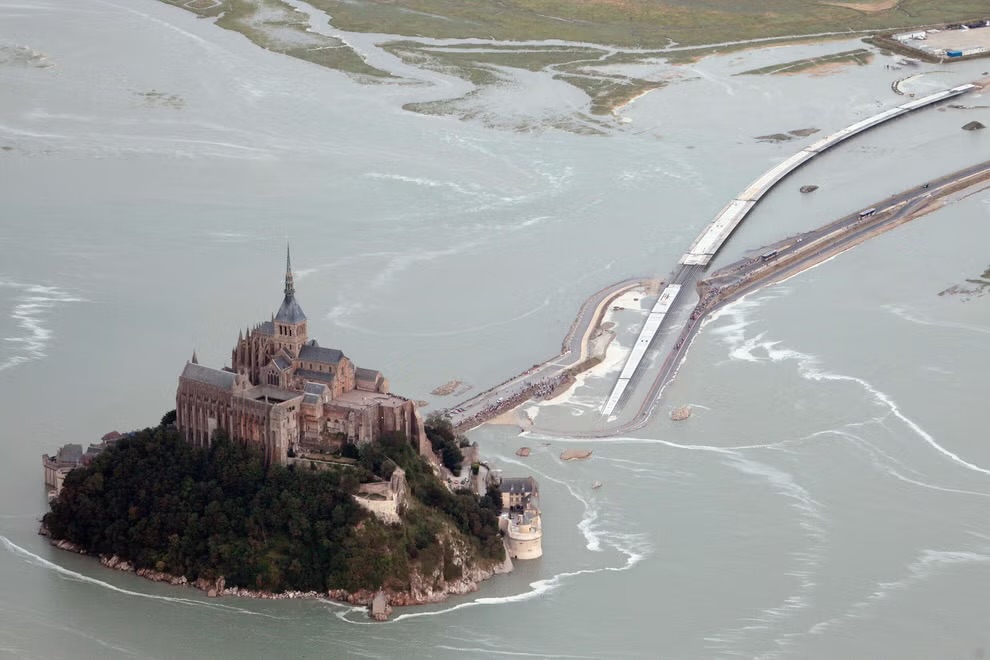
Mont Saint-Michel at high tide
Chapter 4 of the textbook explained how the Moon and the Sun affect ocean tides. We learned that the timing and height of tides at a given location depends on its latitude, the orientation of the coastline, and the depth and shape of any channel the tide has to flow through. The book gave an example of a location with an unusual tidal pattern; the incoming tide at the abbey of Mont Saint-Michel in Normandy, France.
The difference between low and high tide at Mont Saint-Michel is up to 15 meters which makes it one of the highest tides in Europe! The tide rises faster than people can swim, but many kayakers enjoy the strong current!
If you were planning a trip to Mont Saint-Michel to see the impressive tidal bore, you would want to consider a few factors. Since it is a spring tide, you would want to visit during the New Moon or Full Moon (the strongest tide is usually 36 to 48 hours after). You could also use this tide forecast to pick the best day, time, and viewing site! Would you travel to Mont Saint-Michel or any other famous tidal site to see the tidal bore in person?

Kayakers enjoying the strong current in the Mont Saint-Michel Bay!
Other source: Textbook chapter 4
Leave a comment